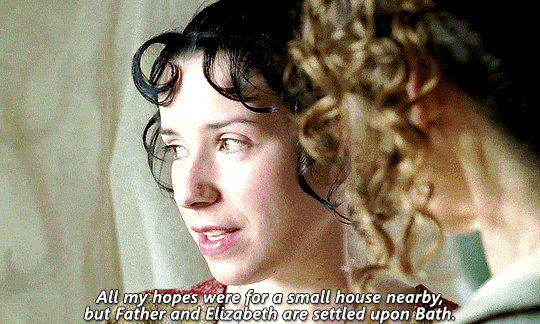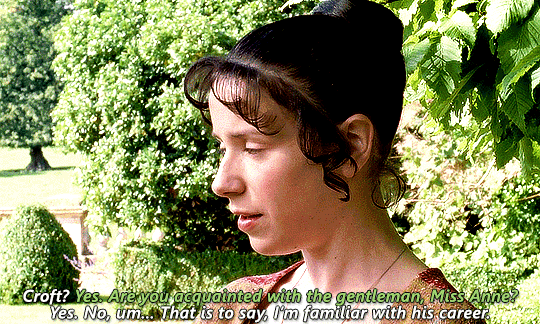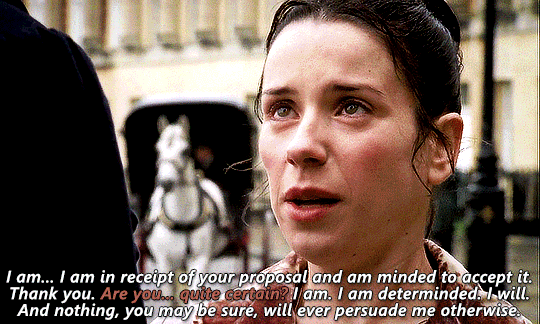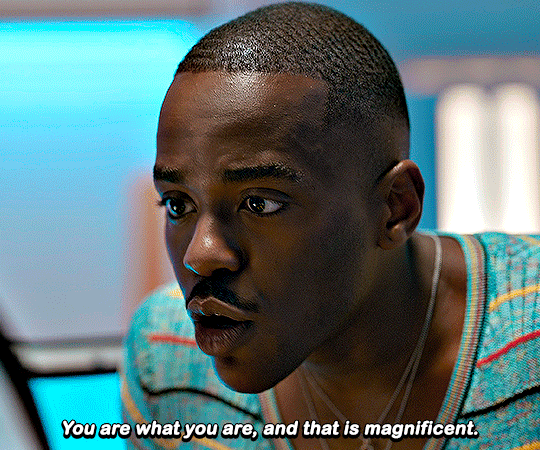Text
Sometimes a creative outlet is a fun little hobby and sometimes it's a lifelong affliction. Like I crochet because making little woven animals sparks joy and I'm a writer whether I like it or not because I'm tormented by visions
28K notes
·
View notes
Note
You posted about adhd and I was hoping to follow up to clarify something. I’ve explained to my partner a million times about how the borderline-hoarding mess of his space is very mentally draining to me, and he understands but we’ve both essentially accepted he won’t clean his mess because he can’t because of his adhd. You’re saying he’s actually being a shit head?
This isn't necessarily an issue of him being a shithead, but it also isn't a sustainable situation. It's not good for you and there's a level of clutter that's probably not good for him either.
Large bastard is a lot more clutter-y than I am. The solution we've come to is trying to keep our messes at least isolated from one another; he can have his messes and I can have mine, but he can have those messes in his spaces, not all over the place. Sometimes those messes migrate, and that's when it's important for him to make the effort to rein them in rather than trying and failing to make a daily effort to keep our entire shared space tidy.
I think when you say "we've both essentially accepted he won't clean his mess" what I'm hearing is resignation; you're not happy about this but you don't know what to do so you've thrown up your hands and he feels helpless and unsure of what to do to improve the situation. This is the kind of "it's fine" that isn't really fine.
I think it would be worthwhile for you to each separately think about the mess and talk about it together. Are there areas that YOU *need* to have not-messy? Both for utility and your mental health? Are there areas where you can tolerate more mess than otherwise? Are there areas that are going to be harder for him to keep the mess out of than others? Are there things he doesn't *know* about cleaning up the mess?
I'm obviously a big "communication communication communication" person so I'm going to recommend a lot of talking about stuff, which is probably going to mean a lot of thinking about and interrogating stuff. I'm going to say "talk to him about why the mess bothers you" which means you also have to really articulate to yourself why the mess bothers you (for instance I'm not actually *bothered* by a messy kitchen, but I know it's going to reflect badly on us - and me specifically b/c of presumed gender roles - if someone pops by and the kitchen is a disaster, AND a messy kitchen is going to be harder to use). Genuinely, sometimes knowing *why* something is a problem might make it easier for someone with ADHD to do something. And it's not that he doesn't care that it upsets you, it's just that "Oh if I don't wash my breakfast dishes Anon won't have clear counterspace to make lunch" might be stickier in his brain (and less hard to look at emotionally) than "this thing I forget to do upsets my partner so I should do it."
For the record, I think that people with ADHD should read up on Demand Avoidance and see if it might explain some of the issues that they have in their day-to-day life; I've seen some really unfortunate situations with friends where trying to do things that their partner needed became the subject of demand avoidance. *I* have experienced negative outcomes of demand avoidance. The solution to that, however, isn't to stop making attempts to do the thing OR to simply try harder to do as they're asked/told (which reinforces the demand), it's to work on setting up a situation where the partners' needs are not interpreted as a demand. This is fuck-off difficult and requires a lot of patience and care and many attempts to succeed and will be different for each person and relationship.
(Also for the record demand avoidance isn't *super* strongly linked to ADHD and it's not a definitive symptom; like Rejection Sensitive Dysphoria, it is something that occurs in some number of people with ADHD and can be a useful lens through which to examine various behaviors; you don't need to have DA or RSD to have ADHD, and having DA or RSD also doesn't invalidate your diagnosis; they're symptoms. For me, DA often feels like "if I don't look at it, it can't get me" - If I ignore all the messages I've got they aren't real and don't have real consequences so I'll just ignore my texts. If I don't look at the vendor email about the order, the problem with the order isn't real and it won't get added to my task list. If I don't look at the requests in my inbox I can't let people down when I don't do them. It's a self-protective coping mechanism but it's *maladaptive* and I can't just ignore the vendor email or all my texts. I need to work on a way of doing the stuff that I'm avoiding in a way that makes it less stressful and doesn't hurt the people relying on me. That takes a lot of effort, personal insight, trial and error, and )
But before I dive into specifics I want to be really really clear about one thing: sometimes people are simply incompatible. Sometimes one person has such a low tolerance for "mess" and the other person has such a high threshold for "mess" that it can't be reconciled. It sucks that this can end up being a thing that people break up over, but it is MUCH better to acknowledge incompatibility as early as possible instead of spending years and years building resentment.
There used to be a great forum called MiL's Anonymous that I spent a lot of time on. It had a lot of people in a lot of difficult situations struggling to get by and hold their relationships together. The question that was used as a litmus test to approach each situation was simple: If you knew today that everything about living with this person would be the same in five years, would you stay?
Because you can't control your partner. You can't control the future. You can only control yourself and your proximity to situations that are harmful to you. If you knew, 100%, that things wouldn't get better in five years, would you be okay with staying in this relationship? If the answer is "no," then that's that. Don't worry about questions of whether or not your boyfriend is a shithead, start the process of ending the relationship because there's a good chance the situation is going to be exactly the same in five years.
If the answer is "yes," and you'd stay in the relationship regardless of whether or not things changed, then it's time to take actions to improve your life within the context of the relationship.
(No judgement on that yes or no, btw. If you would hate living like this for another five years, and you would feel like you'd wasted your time and hadn't done the things you wanted to with your life, get out. Bail. Go. It will be better for you and better for your partner if you split instead of spending half a decade building resentments and and problems that you'll have to spend another half a decade healing from.)
Also, a note: you describe your boyfriend's mess as borderline hoarding - is the issue *mess* or is the issue *clutter*? I have friends who are very tidy, but whose homes are very cluttered. They like things, they have many things, they keep many things around, but their houses are always clean and well-dusted and orderly, just with a tremendous amount of *stuff.* I am addressing all of this as though the issue is mess, not clutter. If your boyfriend's situation is clutter (the space is busy and packed with things but it is functional and clean) and your issue isn't with *mess* (things out of place, things not having a place, things that need to be cleaned up gathering in stacks, falling behind on regular chores like laundry and dishes and taking out the trash) then you definitely need to assess whether or not you are compatible.
For instance here's a room that is messy but not cluttered compared to a room that is cluttered but not messy:


That first room is a *mess* but it would be very easy to clean up in under an hour. The second room is fairly tidy, but would take significant effort to pare down and declutter. BOTH of these can be difficult to live with but the second one is not dangerous or threatening to anyone's health. (The second one is QUITE cluttered and if every room in a house looks like this it can be overwhelming to live with; this is actually harder to deal with in a relationship than the first one in a lot of ways. I don't have a lot of advice for what to do if your partner is a high degree of tidy-but-cluttered because I don't actually think it's a problem or wrong to have thousands of books or bins full of lego or a million kitchen appliances as long as you have the space and can keep it safe and well-maintained; this is a really significant compatibility issue)
Okay, all that out of the way, here's the hard work.
Talk about this shit
Talk to your partner and define "mess." Make sure you are on the same page about what you mean when you're talking about what a messy room looks like versus what a tidy room looks like. Gather reference pictures. DRAW reference pictures.
Explain not just that the mess upsets you, but *why* and *how* it upsets you. In this context don't think of it as your boyfriend's mess, think of it as an unpleasant roommate. Discuss this using "I-statements". "When I have to pick up laundry all over the apartment, I feel like a parent more than a partner." "When there are piles of miniatures all over the table, I feel like I don't have anywhere to do things I'm interested in." "When there are dishes in the sink, I feel frustrated because I have to clean before I can feed myself."
Discuss, frankly and openly, whether he knows how to clean. I'm not trying to make excuses for him here but a lot of people with ADHD have a lot of stress and avoidance around cleaning because they spent a lot of time getting yelled at for not knowing how to clean properly.
Discuss your needs, be firm about what you require but willing to compromise. You *need* some spaces to be clean, and some spaces may be harder for him to keep clean than others. It may be MUCH harder for him to keep a bedroom tidy than it is to keep a kitchen tidy; if you need a clean and empty bedroom with everything put away and he simply cannot do that, that is a compatibility issue. But perhaps you need *your* side of the bedroom to be very orderly and can tolerate a moderate level of mess and clutter on his side. Maybe you're really really bothered by a messy kitchen, but it doesn't bug you if the dining table is covered with projects and papers. Figure out something more workable than "his mess goes everywhere and i live with it because he's incapable of cleaning" because he probably is not incapable of cleaning and you deserve to have places in your home that are comfortable for you.
Reduce friction for cleaning
Sometimes the problem isn't cleaning, the problem is the many many steps before cleaning, or not knowing where something should go when you are done cleaning. One of the absolute best things I've done for myself for cleaning my space is getting a broom holder and mounting the broom to the wall. Sweeping is now essentially thoughtless. I don't have to find the broom or pull it out from a pile of fans or go scrounging around for a dustpan it's right there on the wall, frictionless. So here are some ways to reduce the barriers to cleaning:
Make sure you and your partner both know how to use your cleaning supplies and know where those supplies are. When I switched dishwasher soap I had to re-show Large Bastard where I was storing it and how it was used, because to him what happened was the dishwasher tabs just vanished one day and he didn't know what I was putting in the machine or the process I used. He sometimes puts tools away in places that I can't see (he's more than a foot taller than me) so sometimes I can't get started on a maintenance project until he shows me where he put the battery pack for the drill.
Consider making a how-to chart to or having him make a how-to chart to keep someplace accessible so he can reference it while cleaning. Goblin.Tools Magic ToDo is great for this. Basically a lot of the time people with ADHD have trouble knowing what to do from step to step even if they've done something before, so having a step by step guide can make it easier (I have notebooks full of step-by-step guides for everything from paying for my tuition to removing licenses for my customers to weeding my yard)
Remove obstacles; don't keep cleaning chemicals in the garage in a box that's behind a stack of parts, keep them in the room you'll be cleaning. Don't keep the cleaning supplies that you use to clean the bathroom in the kitchen. Sometimes this means buying two bottles of bleach solution and two scrubbers and two sets of cleaning gloves but having fewer steps (fetch the windex, fetch the paper towels, fetch the gloves) is often the key to getting things done (open under-sink cabinet and grab windex, gloves, and paper towels that are there instead of in the kitchen).
This sort of overlaps with the next category, which is:
Create Dump Zones
One thing that I've found that seems very different between people with ADHD cleaning and neurotypical people cleaning is that neurotypical people are good at getting to a point where the cleaning is "done." They have checked off their tasks and they have finished and it is over. There are *SOME* chores that are like this (taking out the trash is a binary state, the trash has been taken out or it has not) and some chores are perpetual (horrid cursed dishes) but I think with people with ADHD, some chores that are binary for neurotypicals are actually perpetual chores. For instance "clean off the counter" is not a one and done for me. "Clean off the counter" may involve a three day reorganization project. "Clean off the counter" does not mean "wipe down the tile and put dishes away" it means assessing whether or not I need to make vegetable stock and bleaching three tea containers and reconsidering whether or not the sharps container should live somewhere else and going through the mail and figuring out what needs to be responded to and taking out the recycling and on and on and on.
We have had company at the house for the last two weeks, so I asked large bastard to clean off the dining room table, which is largely a project zone for him. Cleaning off the dining room table meant putting away his meds (and since he's a transplant patient that involves a 30 gallon rubbermade tote), throwing away some trash, and totally reorganizing his workshop. It also incidentally involved picking up a table from facebook marketplace and moving my plants, which has now involved moving my former plant rack outside (moving buckets, finding and organizing planters and gardening tools) and taking the former table to the thrift store (not done yet) and cleaning the rug that was under the former table. So "either the table is clean, or it isn't" isn't really true for us.
HOWEVER "hang on we can't eat until the table is clear so let's drive to Pico Rivera to get that console table right now" isn't a workable plan, so you create dumpzones as areas of holding between the start and the finish of the chore.
A dump zone can be a laundry basket. It can be a craft bin. It can be a back room or under your bed. It is a place to put things that you are going to deal with later because if you deal with them now it is going to derail the thing you are actually trying to do, which is set the table for dinner.
Dump zones are vital to cleaning with ADHD and I recommend them for day-to-day cleaning as well. The day-to-day dump zones might be more for you than for your boyfriend. For instance, Large Bastard works with bullets and he sheds bullets all over the house. I used to get stressed when I found bullets when I was cleaning because are these work bullets? Are these recreational bullets? Are they in testing? Do they need to be pulled? Do they go in the workshop or the office or the garage or does he need these today so they have to stay on the counter? And the answer now is "that's not my problem naughty bullets go in the jar." Which is perfectly sensible because he gets to say "mystery yarn goes in the bin" and "art supplies go in the bucket."
I feel helpless when cleaning a lot of the time. I'm frustrated and lost and I don't know where stuff goes and everything I pick up spins off into three projects in my head and every step feels like a wall to scale. Dump zones help me with that when there's pressure or a reason for cleaning beyond day to day home maintenance. People are coming over? The bedroom is a dump zone, I'll deal with that later. I'm just cleaning up because I need to? Okay I can find a permanent home for this new dish soap.
AS A VERY IMPORTANT COROLLARY TO THIS:
Active projects do not go in dump zones while you or your partner are cleaning. This may mean designating a project sanctuary area like a corner of the table or one particular chair in your main room where a project can be placed so as not to be disturbed. (if my current crochet project ends up in the yarn bin, that may mean that I don't pick the project up for another three months, it lives on the windowsill behind the couch because that's where it'll get worked on)
Do not put things away for your partner, put them in the dump zone for your partner. Your partner has to be the one to put their own stuff away in a way that works for them. I tend to find that this naturally puts a limit on the time stuff sits in the dump zone, because eventually you'll go "hey where's my thing?" and will put stuff away. If that doesn't happen, it's still generally better to have stuff in a dump zone than all over the home.
Do not decide you know what things go together from your partner's stuff and try to "put like things together." The neurotypical urge to put like things together is the mindkiller(j/k). You do not know which things are "similar" in your partner's organization schema and attempting to organize things on your own is going to end up with all of the things "organized" being functionally lost forever from your partner's perspective. Large Bastard's mom would do this and it was infuriating, she'd say "oh I put all the electronics stuff in one box" and she would mean soldering irons, transistors, ham radios, HDMI cables, and cellphone chargers. We are *still* going through boxes of stuff that she "tidied up" when he was hospitalized in 2020 and 2021.
To prevent the need for quite so many dump zones over time, you can work on setting up landing zones and "homes" for projects and tools.
Landing Zones
Landing zones are places where things go when you come inside from doing various things. Sometimes your landing zone only needs to be a tray for your wallet and keys, sometimes your landing zone needs to be a place to take off muddy boots and put a trowel and gloves down before you shower.
To make an effective landing zone, consider what behaviors you're trying to minimize and whether the people using it are ACTUALLY going to use it. For instance I was tired of the corner of my hearth getting cluttered with random junk so I hung up some hooks and put a shelf and a basket there and it became a really effective landing zone for my bag and keys and the mail, but it was VERY ineffective for Large Bastard because it's by a door that isn't the primary door he uses to enter the house. As a result I always know where my keys and bag are but he has trouble finding his keys and wallet. He tends to enter the house through our bedroom and has an overloaded valet next to the door and that's usually where his wallet ends up. Mounting a shelf to the wall above the valet and putting a basket and a hook on it will be a better place for his stuff to land. It's not that he's not using the first zone because he doesn't know that it's there, or because he doesn't care about lost time when I'm searching for my car keys after he borrows them, he's not using it because it's not by the door he uses. That's all.
I have a landing space for when I come in for gardening that's different than the one when I come in from grocery shopping. I have a landing space for when I walk into the dining room instead of the kitchen when I get home.
Landing spaces prevent stuff from piling up all over the place because they are a limited functional space that should be used frequently. Mail ONLY goes in the landing zone. If you have mystery mail or if you're not sure it's safe to toss, you put it in the landing zone. You can't let the mail get piled up too high or you won't have a space for your keys. You can't let the change in your wallet tray get too deep or your wallet is going to slide off, etc., but you also don't just put change on the coffee table or your nightstand because the landing zone is right there.
Homes for items are just what they sound like. They're the place the item goes. It lives there. My meds live on my nightstand. You would not believe how poorly I did with taking my meds on my vacation because they weren't on my nightstand. A while back large bastard lost one of his sets of sorted meds and we tore the house up looking for them because he couldn't find them in his nightstand, which is where they live. *I* found them in his nightstand because I emptied out the entire top drawer (he had only looked on the top layer) and found them underneath a radio and a hammock. Even though they were *hidden* they were in their home, so they were findable. I recently needed ink for an art class. Art supplies live in a dresser by my desk. Ink lives in the art bin or the top left drawer. The ink was not in either of these places (it was on a cabinet in the dining room behind a teacup) so it took me weeks to find it.
Sometimes the reason that ADHD spaces are so messy is because objects have been assigned homes in places that are visible and if they get moved they get lost. This is a genuinely difficult problem that requires a lot of effort to solve and can involve a lot of trial and error for creating a tidy living space. For some people, open shelving and visible storage might be a good solution. For some people, assigning a VERY clear home and inculcating that location by habit is the only way to clean up a space. For some people one very cluttered corner to at least isolate the chaos does the trick (for me and large bastard open shelving doesn't work because anything in one place for too long becomes invisible; that means that I rely on assigning things homes and large bastard relies on having contained chaos and a general idea of where to search but what that DOES NOT mean is that he is clean or tidy. His spaces look like an explosion. But he can mostly find his stuff and do what he needs to do and as long as that's limited to specific places in shared spaces I can live with it; the dining room table can be a disaster, the kitchen cannot).
People organize things differently. It often takes a while for neurotypical adults to settle into an organizational style that works for them and ADHD adults may need to settle into a new system every few months for it to continue working. The cleanup and declutter is most likely going to be a permanent project that is always going to demand some level of attention from everyone in a shared space, but "my ADHD means I can't do it" is not really going to fly. Maybe his ADHD means that he can't keep his space tidy, but it doesn't mean you can't move stuff from shared spaces into dump zones or that he can't do stuff around the house.
If he's insisting that his ADHD means that he can't clean it is possible that he's not being a shithead, he just feels helpless and doesn't know where to start and has adopted the belief that he's a useless piece of shit who can't even keep a tidy space like a grownup because he's internalized a lot of shitty attitudes (hello, my internal monologue about keeping a clean house). But it's also possible that he's just being a shithead.
It's something that's worthwhile to investigate with him. If he's unwilling to make an attempt, then he's being a shithead.
It is also not your responsibility to rehabilitate another person. If he wants to clean and it's something he feels bad about and needs some help and support with the way that someone might need help or support for learning to use a mobility aid, that is fine but you don't have to be the one who gives him that support if it's detrimental to your health, and you don't have to be the one to teach him that stuff if it's not something you're capable of. And if he is NOT interested in working on making your shared living space more accessible for you, that is not your suitcase to unpack and you just have to ask yourself the question from the start: would I stay with this person if I knew the situation was never going to change?
IDK, I'm sure a lot of this reads like "anon you must take on the emotional labor of training your partner to be an adult" but it's really meant to be more of a way of assessing yourself and your relationship. If you created landing zones do you think he'd use them? Would he get angry if you assigned a laundry basket as a dump zone for his stuff while you tidy the living room? Is living with him long-term going to be comfortable for you if nothing changes? Do you have enough of a shared definition of "mess" that you're at least in the ballpark for what counts as a clean house?
anyway good luck, and a reminder to folks that I'm compiling a bunch of adhd resources and other information on my personal website, ms-demeanor.com. It's coming along slowly but it will eventually include stuff like ADHD cleaning tips and how to tackle a hoard, so maybe keep your eye on that space.
2K notes
·
View notes
Text


That goodbye was harder that I ever imagined.
SPIRIT: STALLION OF THE CIMARRON
2002, dir. Kelly Asbury, Lorna Cook
470 notes
·
View notes
Text






SPIRIT: STALLION OF THE CIMARRON
2002, dir. Kelly Asbury, Lorna Cook
1K notes
·
View notes
Text
"everybody experiences that" says mother who has the same symptom of the same mental illness
104K notes
·
View notes
Note
I would be very interested in hearing the museum design rant

by popular demand: Guy That Took One (1) Museum Studies Class Focused On Science Museums Rants About Art Museums. thank u for coming please have a seat
so. background. the concept of the "science museum" grew out of 1) the wunderkammer (cabinet of curiosities), also known as "hey check out all this weird cool shit i have", and 2) academic collections of natural history specimens (usually taxidermied) -- pre-photography these were super important for biological research (see also). early science museums usually grew out of university collections or bequests of some guy's Weird Shit Collection or both, and were focused on utility to researchers rather than educational value to the layperson (picture a room just, full of taxidermy birds with little labels on them and not a lot of curation outside that). eventually i guess they figured they could make more on admission by aiming for a mass audience? or maybe it was the cultural influence of all the world's fairs and shit (many of which also caused science museums to exist), which were aimed at a mass audience. or maybe it was because the research function became much more divorced from the museum function over time. i dunno. ANYWAY, science and technology museums nowadays have basically zero research function; the exhibits are designed more or less solely for educating the layperson (and very frequently the layperson is assumed to be a child, which does honestly irritate me, as an adult who likes to go to science museums). the collections are still there in case someone does need some DNA from one of the preserved bird skins, but items from the collections that are exhibited typically exist in service of the exhibit's conceptual message, rather than the other way around.
meanwhile at art museums they kind of haven't moved on from the "here is my pile of weird shit" paradigm, except it's "here is my pile of Fine Art". as far as i can tell, the thing that curators (and donors!) care about above all is The Collection. what artists are represented in The Collection? rich fucks derive personal prestige from donating their shit to The Collection. in big art museums usually something like 3-5% of the collection is ever on exhibit -- and sometimes they rotate stuff from the vault in and out, but let's be real, only a fraction of an art museum's square footage is temporary exhibits. they're not going to take the scream off display when it's like the only reason anyone who's not a giant nerd ever visits the norwegian national museum of art. most of the stuff in the vault just sits in the vault forever. like -- art museum curators, my dudes, do you think the general public gives a SINGLE FUCK what's in The Collection that isn't on display? no!! but i guarantee you it will never occur, ever, to an art museum curator that they could print-to-scale high-res images of artworks that are NOT in The Collection in order to contextualize the art in an exhibit, because items that are not in The Collection functionally do not exist to them. (and of course there's the deaccessioning discourse -- tumblr collectively has some level of awareness that repatriation is A Whole Kettle of Worms but even just garden-variety selling off parts of The Collection is a huge hairy fucking deal. check out deaccessioning and its discontents; it's a banger read if you're into This Kind Of Thing.)
with the contents of The Collection foregrounded like this, what you wind up with is art museum exhibits where the exhibit's message is kind of downstream of what shit you've got in the collection. often the message is just "here is some art from [century] [location]", or, if someone felt like doing a little exhibit design one fine morning, "here is some art from [century] [location] which is interesting for [reason]". the displays are SOOOOO bad by science museum standards -- if you're lucky you get a little explanatory placard in tiny font relating the art to an art movement or to its historical context or to the artist's career. if you're unlucky you get artist name, date, and medium. fucker most of the people who visit your museum know Jack Shit about art history why are you doing them dirty like this
(if you don't get it you're just not Cultured enough. fuck you, we're the art museum!)
i think i've talked about this before on this blog but the best-exhibited art exhibit i've ever been to was actually at the boston museum of science, in this traveling leonardo da vinci exhibit where they'd done a bunch of historical reconstructions of inventions out of his notebooks, and that was the main Thing, but also they had a whole little exhibit devoted to the mona lisa. obviously they didn't even have the real fucking mona lisa, but they went into a lot of detail on like -- here's some X-ray and UV photos of it, and here's how art experts interpret them. here's a (photo of a) contemporary study of the finished painting, which we've cleaned the yellowed varnish off of, so you can see what the colors looked like before the varnish yellowed. here's why we can't clean the varnish off the actual painting (da vinci used multiple varnish layers and thinned paints to translucency with varnish to create the illusion of depth, which means we now can't remove the yellowed varnish without stripping paint).
even if you don't go into that level of depth about every painting (and how could you? there absolutely wouldn't be space), you could at least talk a little about, like, pigment availability -- pigment availability is an INCREDIBLY useful lens for looking at historical paintings and, unbelievably, never once have i seen an art museum exhibit discuss it (and i've been to a lot of art museums). you know how medieval european religious paintings often have funky skin tones? THEY HADN'T INVENTED CADMIUM PIGMENTS YET. for red pigments you had like... red ochre (a muted earth-based pigment, like all ochres and umbers), vermilion (ESPENSIVE), alizarin crimson (aka madder -- this is one of my favorite reds, but it's cool-toned and NOT good for mixing most skintones), carmine/cochineal (ALSO ESPENSIVE, and purple-ish so you wouldn't want to use it for skintones anyway), red lead/minium (cheaper than vermilion), indian red/various other iron oxide reds, and apparently fucking realgar? sure. whatever. what the hell was i talking about.
oh yeah -- anyway, i'd kill for an art exhibit that's just, like, one or two oil paintings from each century for six centuries, with sample palettes of the pigments they used. but no! if an art museum curator has to put in any level of effort beyond writing up a little placard and maybe a room-level text block, they'll literally keel over and die. dude, every piece of art was made in a material context for a social purpose! it's completely deranged to divorce it from its material context and only mention the social purpose insofar as it matters to art history the field. for god's sake half the time the placard doesn't even tell you if the thing was a commission or not. there's a lot to be said about edo period woodblock prints and mass culture driven by the growing merchant class! the met has a fuckton of edo period prints; they could get a hell of an exhibit out of that!
or, tying back to an earlier thread -- the detroit institute of arts has got a solid like eight picasso paintings. when i went, they were kind of just... hanging out in a room. fuck it, let's make this an exhibit! picasso's an artist who pretty famously had Periods, right? why don't you group the paintings by period, and if you've only got one or two (or even zero!) from a particular period, pad it out with some decent life-size prints so i can compare them and get a better sense for the overarching similarities? and then arrange them all in a timeline, with little summaries of what each Period was ~about~? that'd teach me a hell of a lot more about picasso -- but you'd have to admit you don't have Every Cool Painting Ever in The Collection, which is illegalé.
also thinking about the mit museum temporary exhibit i saw briefly (sorry, i was only there for like 10 minutes because i arrived early for a meeting and didn't get a chance to go through it super thoroughly) of a bunch of ship technical drawings from the Hart nautical collection. if you handed this shit to an art museum curator they'd just stick it on the wall and tell you to stand around and look at it until you Understood. so anyway the mit museum had this enormous room-sized diorama of various hull shapes and how they sat in the water and their benefits and drawbacks, placed below the relevant technical drawings.
tbh i think the main problem is that art museum people and science museum people are completely different sets of people, trained in completely different curatorial traditions. it would not occur to an art museum curator to do anything like this because they're probably from the ~art world~ -- maybe they have experience working at an art gallery, or working as an art buyer for a rich collector, neither of which is in any way pedagogical. nobody thinks an exhibit of historical clothing should work like a clothing store but it's fine when it's art, i guess?
also the experience of going to an art museum is pretty user-hostile, i have to say. there's never enough benches, and if you want a backrest, fuck you. fuck you if going up stairs is painful; use our shitty elevator in the corner that we begrudgingly have for wheelchair accessibility, if you can find it. fuck you if you can't see very well, and need to be closer to the art. fuck you if you need to hydrate or eat food regularly; go to our stupid little overpriced cafeteria, and fuck you if we don't actually sell any food you can eat. (obviously you don't want someone accidentally spilling a smoothie on the art, but there's no reason you couldn't provide little Safe For Eating Rooms where people could just duck in and monch a protein bar, except that then you couldn't sell them a $30 salad at the cafe.) fuck you if you're overwhelmed by noise in echoing rooms with hard surfaces and a lot of people in them. fuck you if you are TOO SHORT and so our overhead illumination generates BRIGHT REFLECTIONS ON THE SHINY VARNISH. we're the art museum! we don't give a shit!!!
#as a certified Museum Person#I endorse this massively#maybe it’s just bc I’m also a writer but give me NARRATIVE#it’s rare outside certain contexts that museums think any kind of progression is ok#but that’s how humans do things! and it much much more interesting!#like sure sometimes I see the metaphor myself but sometimes intention MATTERS#and incredibly so with art! the amazing connection you can have with an artist through their intention!#like me and Lichtenstein bc it’s PAINT! those perfect tiny circles in regiments are PAINT!#the SKILL! the SHADE to art snobs to say look I’ve used this extraordinary skill of precision on POP ART!#that’s INTENTION BABY! and it’s beautiful! and it’s a connection and a narrative!#ok rant over as you were
8K notes
·
View notes
Text

helen “trans people are perpetuating gender steriotypes” joyce is now upset that the scientific american is writing about how women were hunters too back in the day, not just mothers and caretakers. feminist win!
77K notes
·
View notes
Text
more fucking petitions because this clown car country cannot stop with the bigotry for 30 seconds
uk people it takes 5 seconds and you checking your email to verify
everyone else: rebloge please
41K notes
·
View notes
Text
shoutout to everyone who wants to infodump but cant string together coherent thoughts to form sentences and instead just look at you like this

89K notes
·
View notes
Text
Ngl, I have real trouble sometimes acknowledging that my adhd, and to an extent my anxiety, disables me. And then I see stuff like this and go oh. Oh No.
Disability will have you thinking shit like “I’m not even that disabled. I can manage as long as I limit myself to very specific careers, never go shopping for more than an hour or two at a time, keep my plans open so I can cancel and stay in if need be, and only go out a few nights per week at the most”
63K notes
·
View notes
Text
Disability will have you thinking shit like “I’m not even that disabled. I can manage as long as I limit myself to very specific careers, never go shopping for more than an hour or two at a time, keep my plans open so I can cancel and stay in if need be, and only go out a few nights per week at the most”
63K notes
·
View notes
Text
Still can’t believe sometimes that ADHD acceptance is what it is. Or isn’t, more to the point.
Like, we have what amounts to must beat self to work like NTs condition. And the attitude is not that beatings are not good, but instead is….that if you fail in the beatings it’s your own fault for not working?
It might not be that totally physical and obvious, but it amounts to the same thing. And yet someone managed to convince me I ought to beat myself harder, and feel guilty about not doing that.
0 notes
Text
i know we won't but GOD i hope he never tells her he's an alien i hope we have a whole series of ruby thinking he's just a time travelling human until he gets hurt and is like ohhhhhh ruby love can you check my pulses and she's like check your fucking what now
9K notes
·
View notes
















